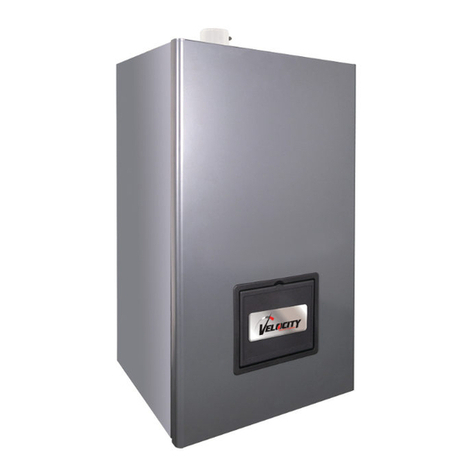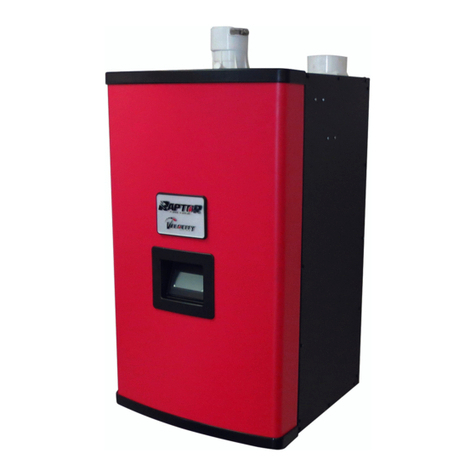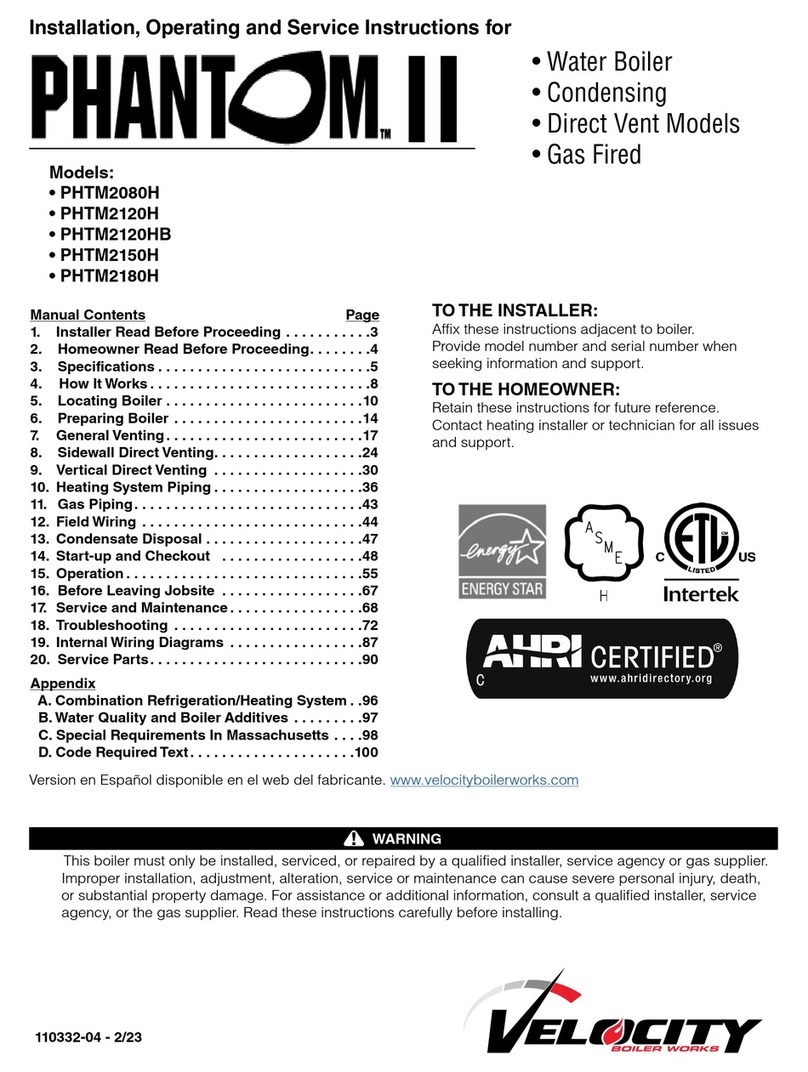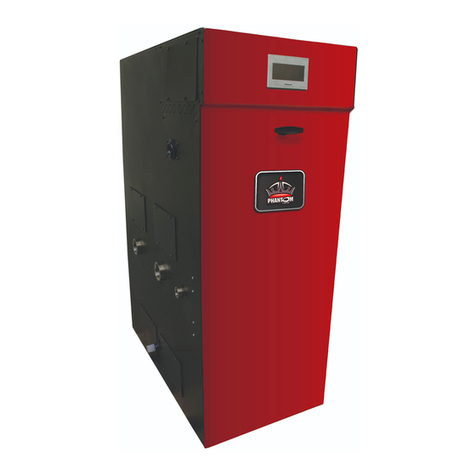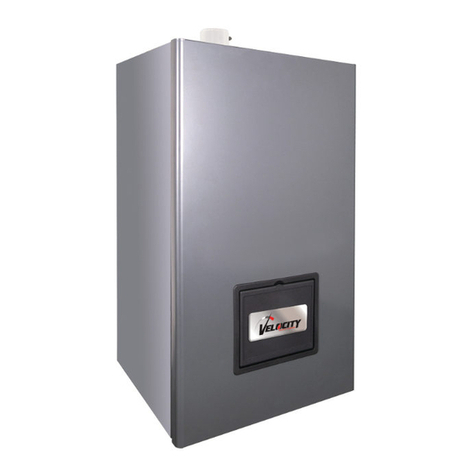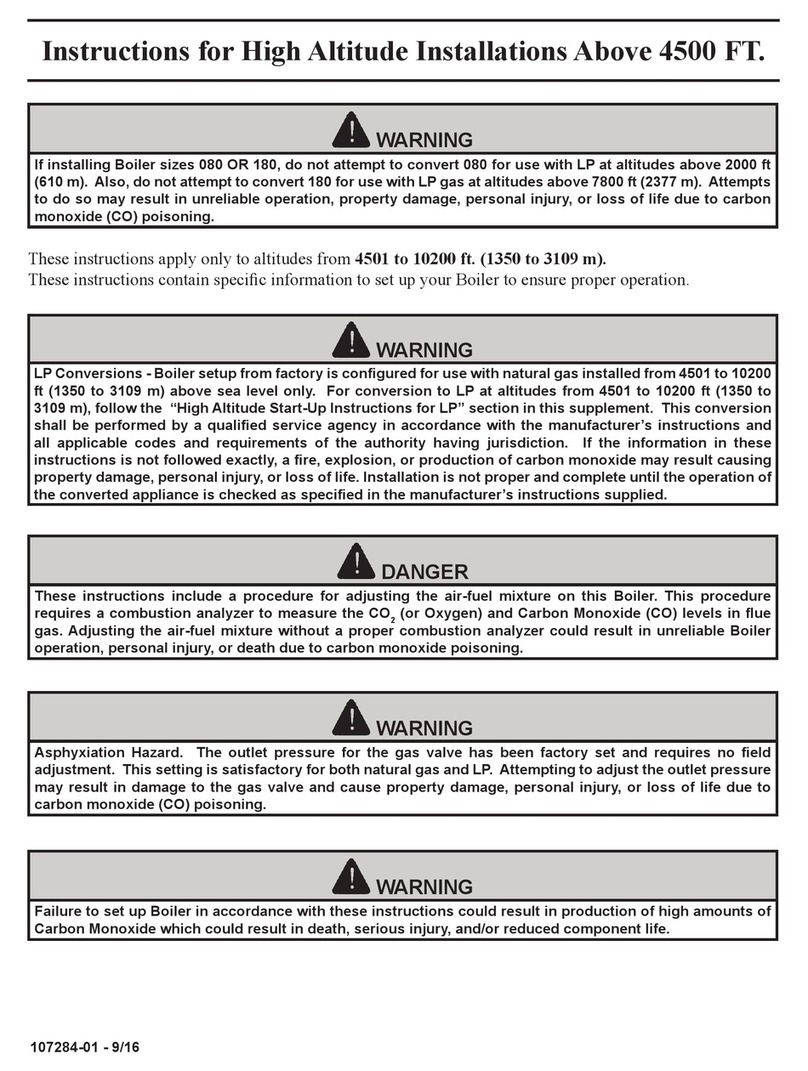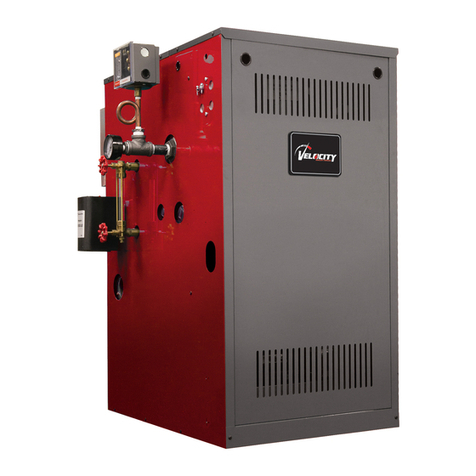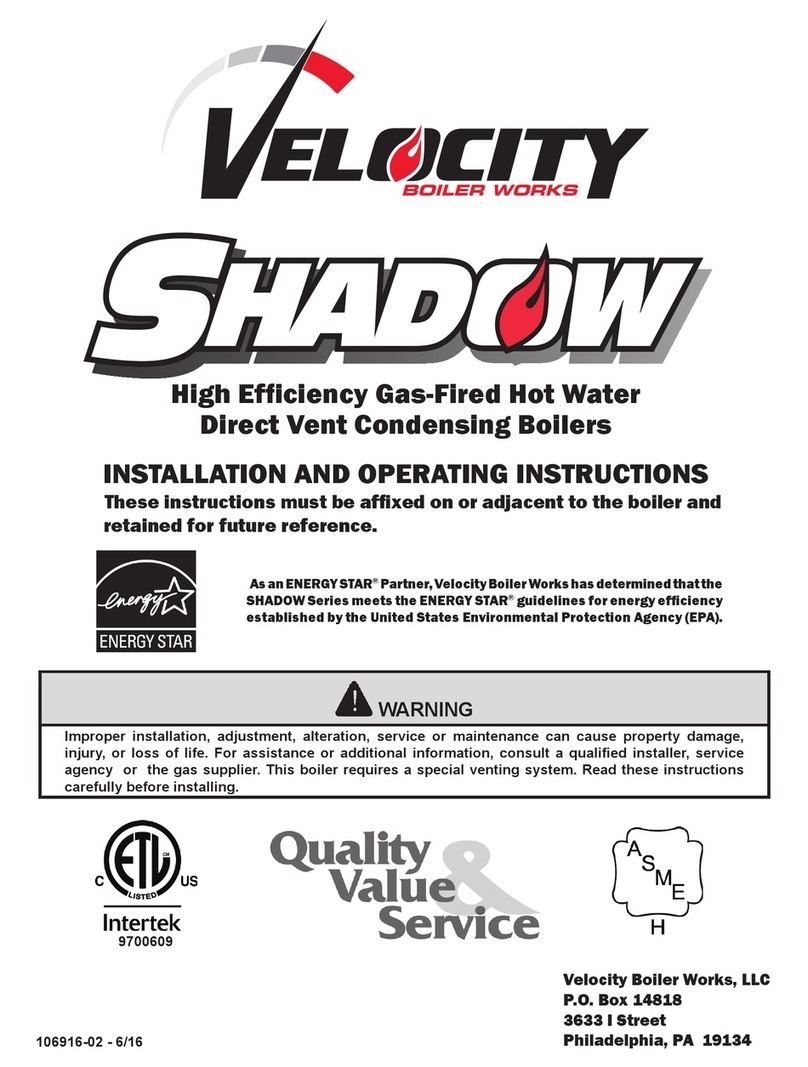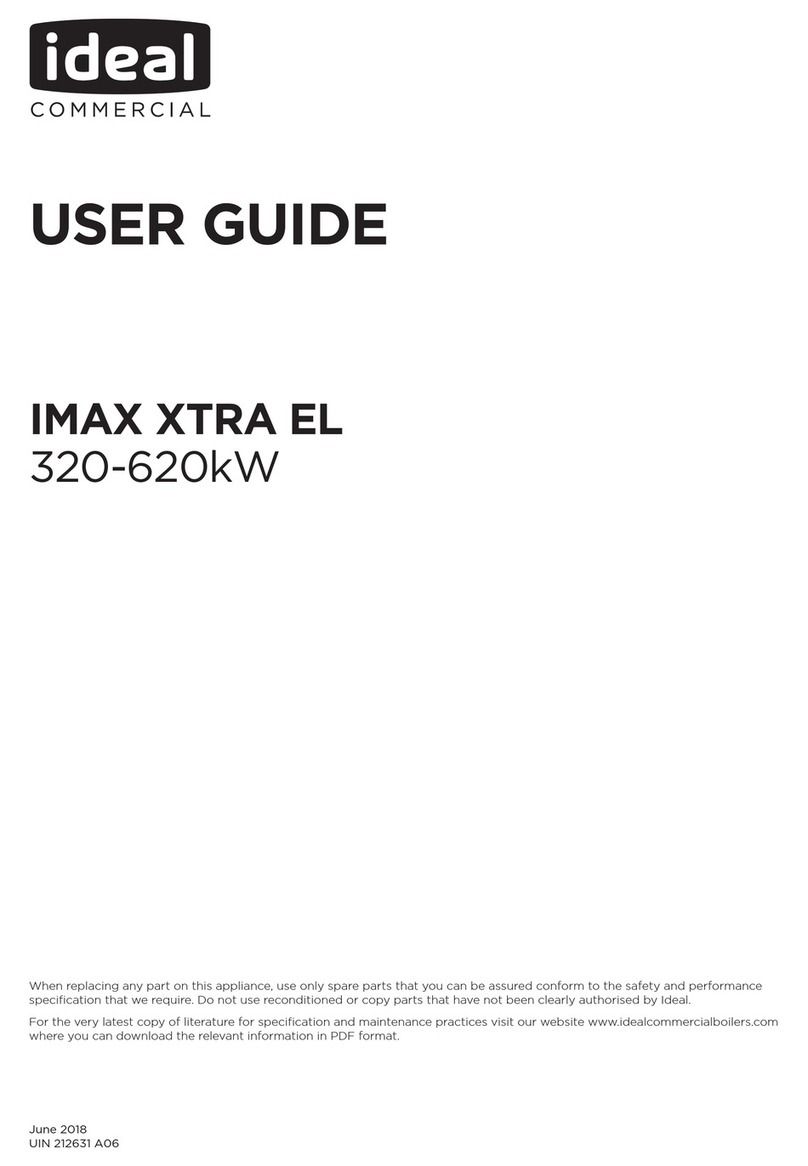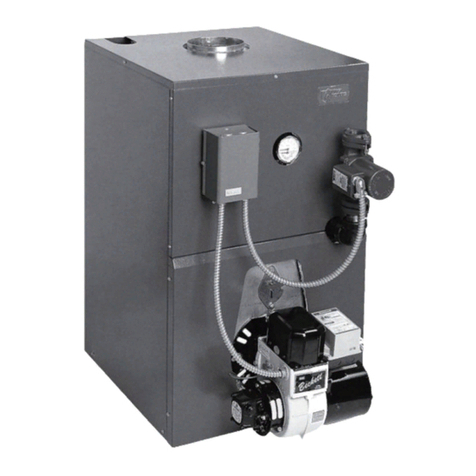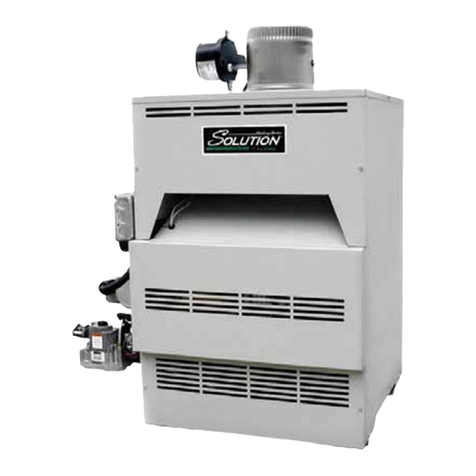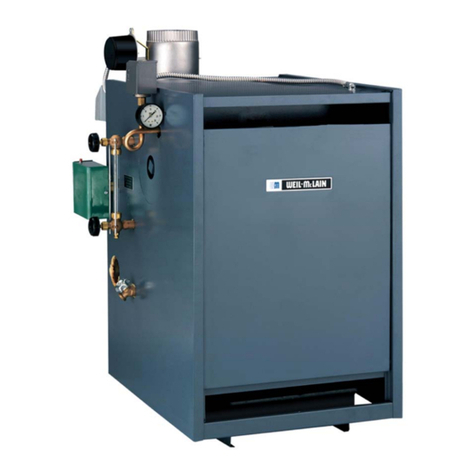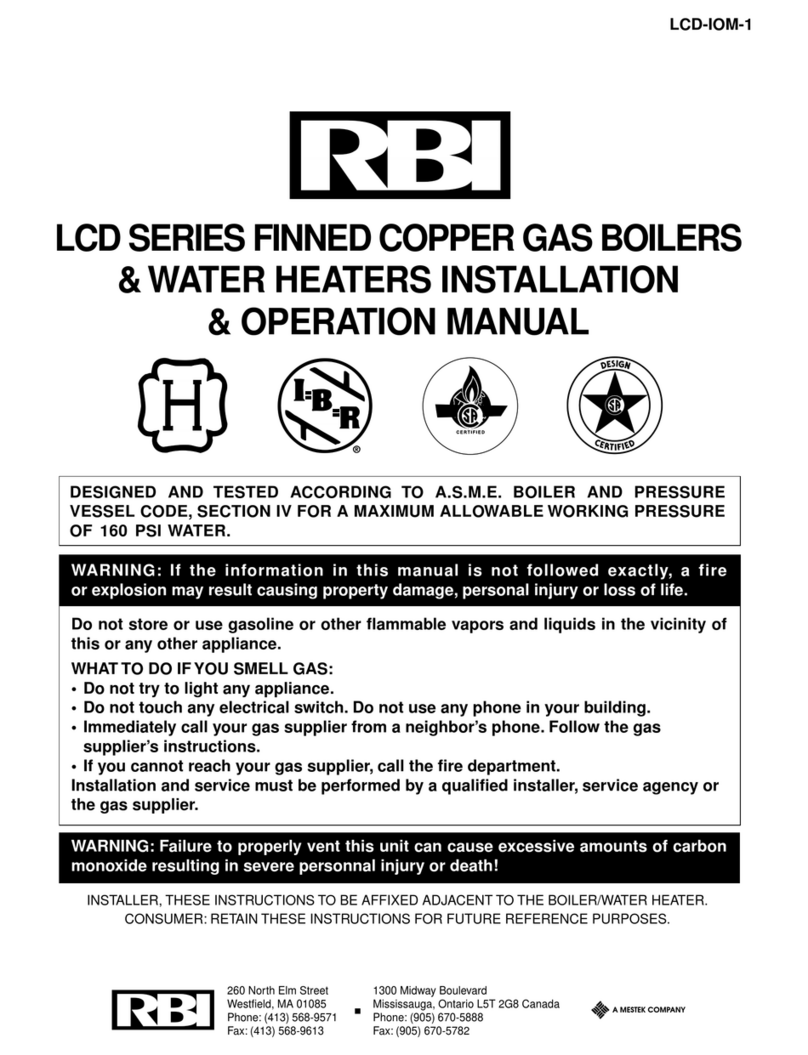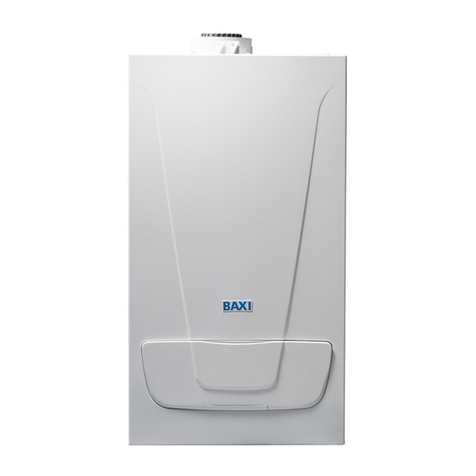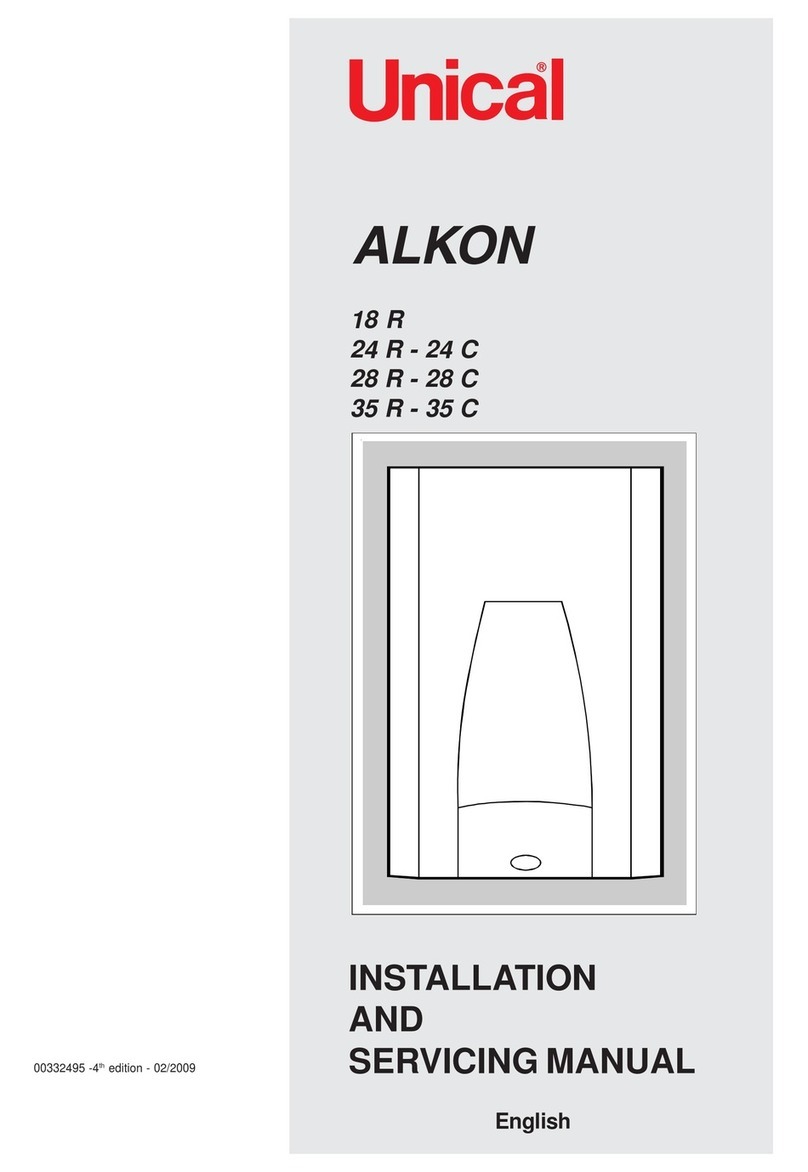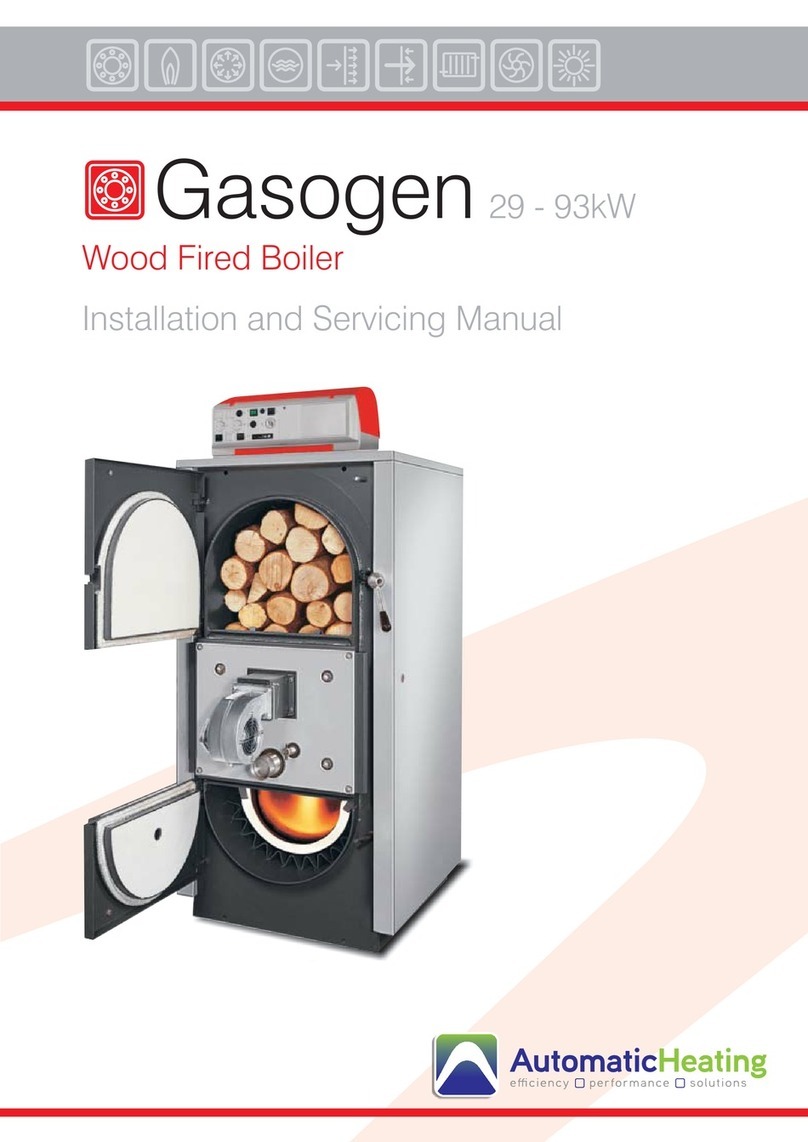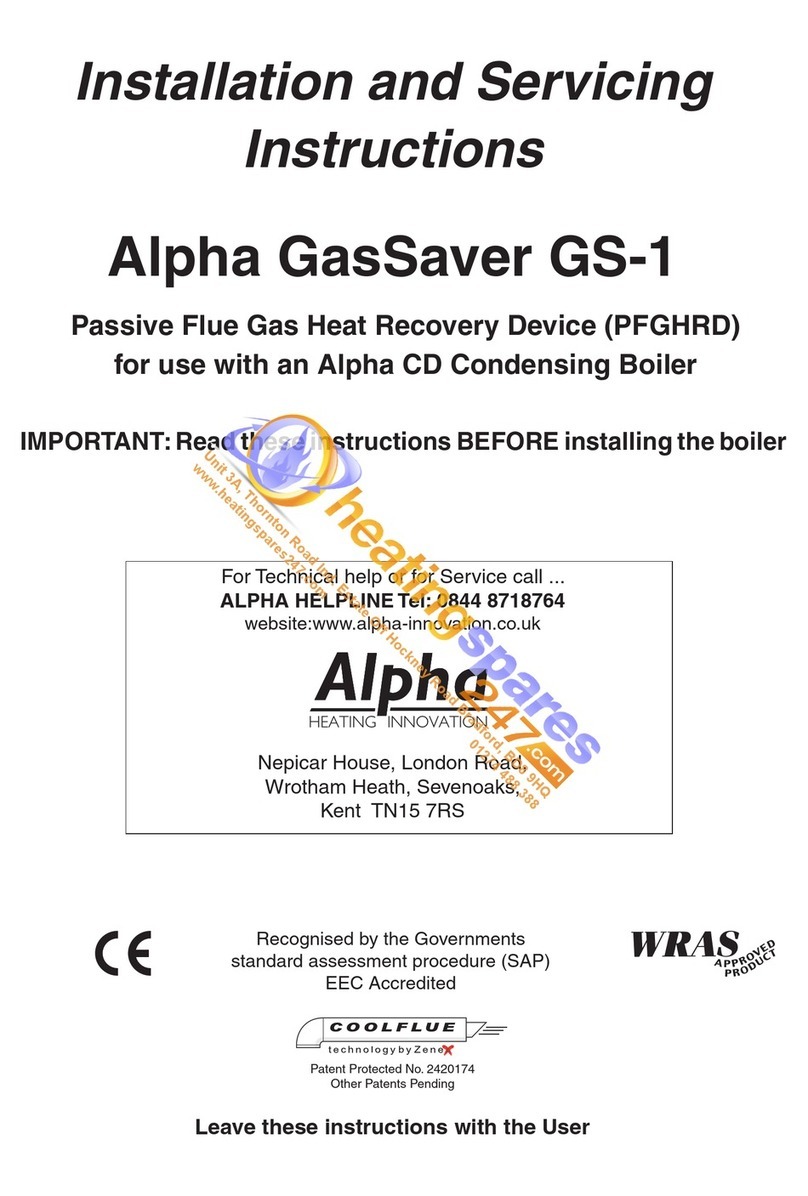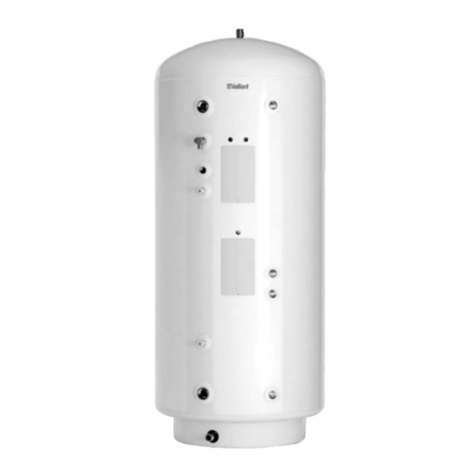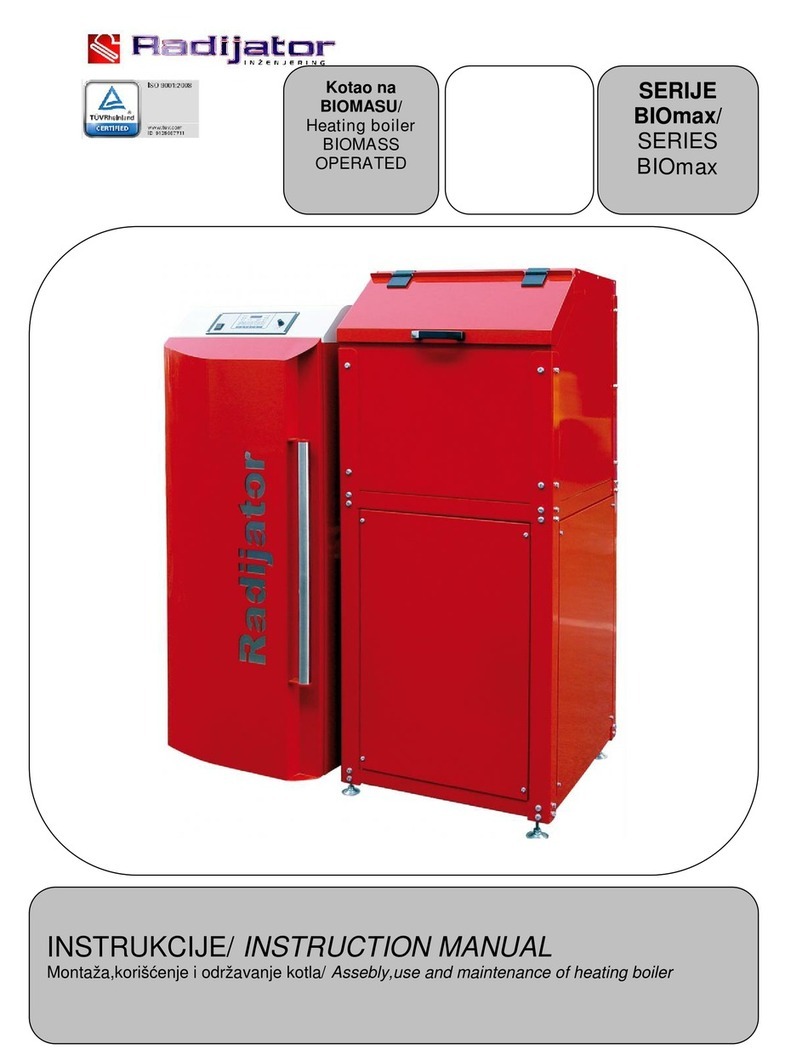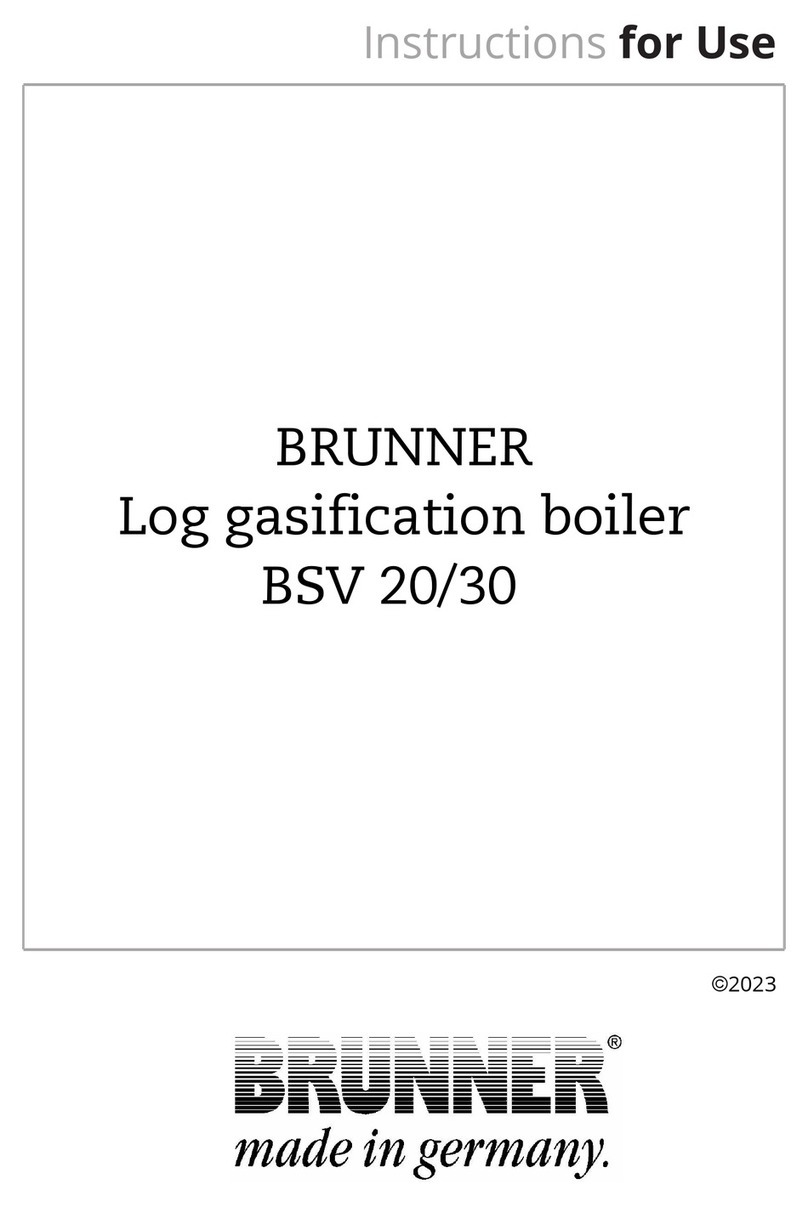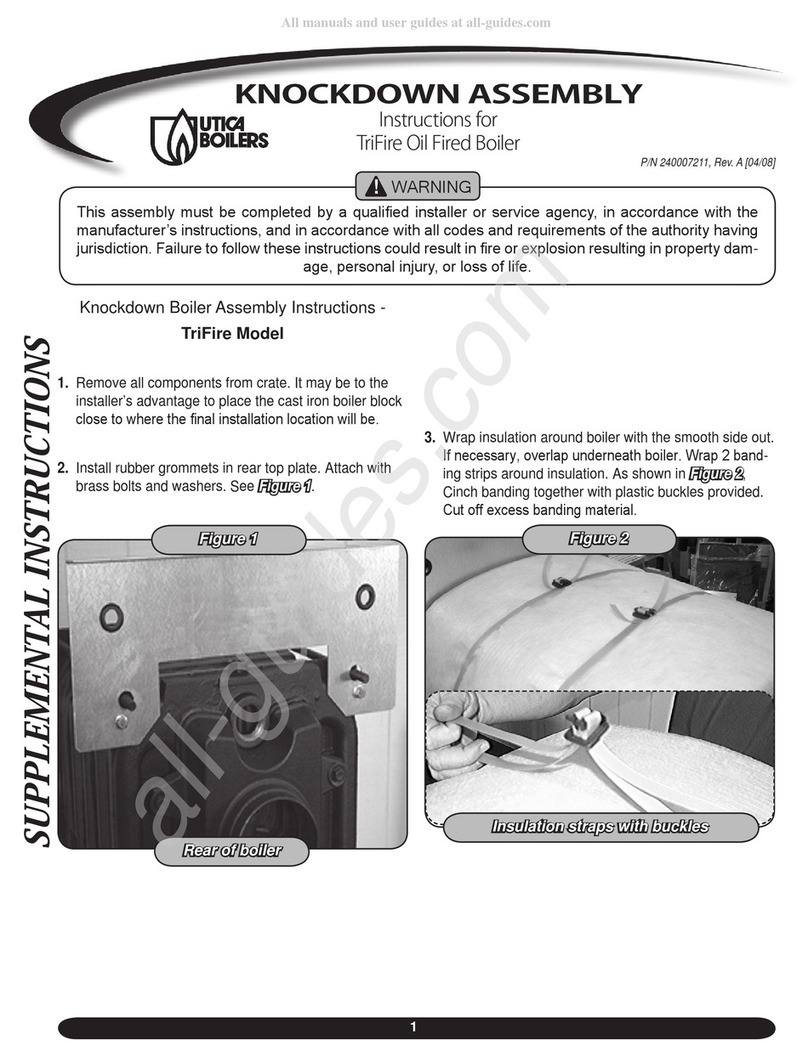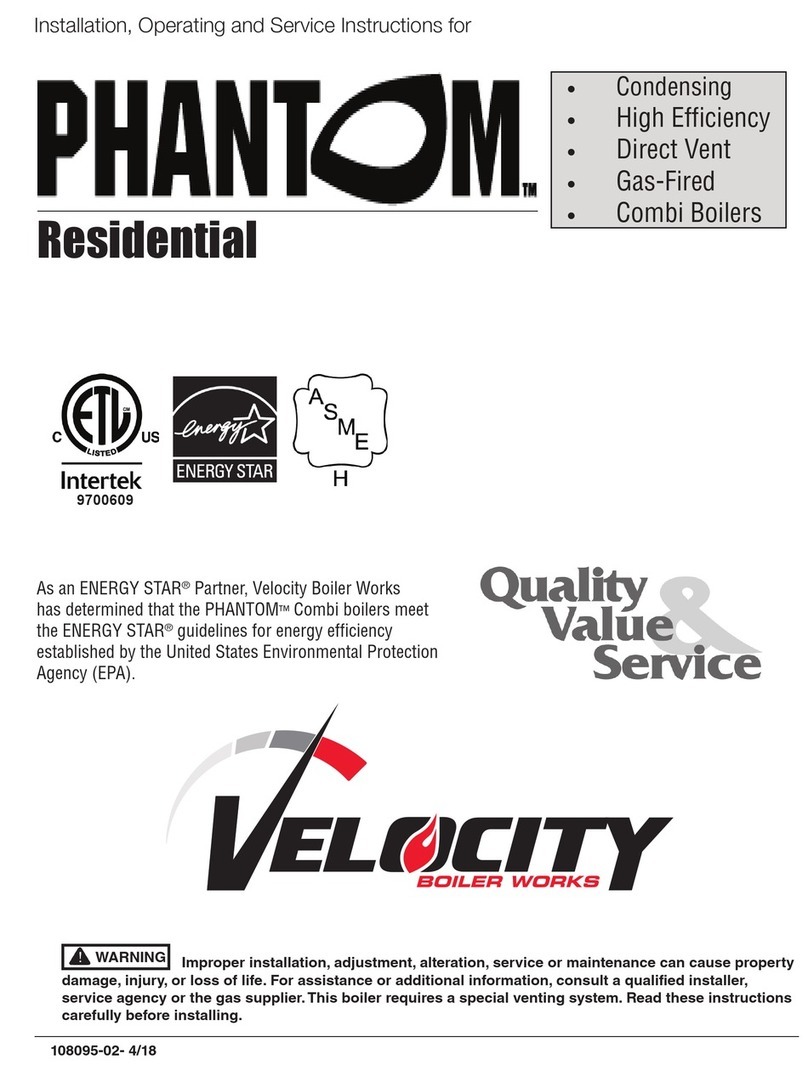
4
Phantom II Extended Features
112419-01 - 10/23
1Introduction (continued)
Central Heat (CH) 1 and 2 Menus
8. Differences Above and Below
The boiler is started based on the demand
(Heat T’stat, Aux T'stat inputs or DHW demand),
measured supply sensor temperature, setpoint
and “difference below”. When water temperature
is lower than setpoint minus difference below
the boiler will start. Similarly, the control uses the
“difference above” to stop the boiler. When water
temperature is higher than setpoint plus difference
above the boiler will stop. These two settings allow
the user to adjust the boiler run time and cycling.
The app allows these items to be adjusted for
CH1, CH2 and heating boiler DHW demands.
Combi boilers DHW demands have the difference
above and below pre-set and are not adjustable.
9. CH Modulation Sensor
Heat demand may respond to the boiler’s supply
temperature sensor or header temperature
sensor. Sometimes it is advantageous to install
an optional header temperature sensor in the
hydronic system. Installing a sensor in a location
that senses blended water temperature allows the
boiler to deliver water to heating elements at a
desired temperature, independent of the amount
of supply water and return water blending that
takes place.
10. CH1 vs. CH2 Priority
When “CH1 vs. CH2 Priority” is set to “CH1<CH2”
Central Heat 2 (Auxiliary Heat) demand has
priority over Central Heat 1 demand. If both
demands are present the setpoint, difference
above, difference below and maximum modulation
rates will be Central Heat 2 rather than Central
Heat 1. When “CH1 vs. CH2 Priority” is set to
“CH1>CH2” Central Heat 1 has priority. Typically,
the higher temperature demand is given priority,
ensuring high enough temperature to each type of
zone.
11. Heat Response Speed
“Heat Response Speed” adjusts the temperature
controller Proportional, Integral and Derivative
(PID) values all at once. Higher values cause
a larger firing rate change for each degree
of temperature change. If set too high, the
temperature “overshoots” required setpoint and
may cause the boiler to cycle off unnecessarily.
Lower values cause a smaller firing rate change
for each degree of temperature change. If set too
low, the temperature response will be sluggish,
and temperature will wander away from setpoint.
Outdoor Reset CH1 and CH2
12. Outdoor Reset Enable
Outdoor Reset may be set to Sensorless Reset,
Outdoor Air Reset or be disabled. Sensorless
Reset adjusts the active setpoint based on total
boiler heat output per unit of time. Outdoor Air
Reset adjusts the active setpoint based on the
outdoor temperature. This method requires an
outdoor air sensor to be installed. When a heating
boiler only serves an indirect water heater the
reset feature may be disabled.
13. Boost Time
When Central Heat Setpoint is decreased by
Sensorless or Outdoor Air Reset features, the
Boost function may be enabled to increase the
setpoint when central heat demand is not satisfied
for longer than the Boost Time setpoint. The
Boost feature increases operating temperature
setpoint by 10°F (5.6°C) every 20 minutes (field
adjustable) the central heat demand is not
satisfied. This process will continue until heat
demand is satisfied (indoor air is at desired
temperature). Once the heat demand is satisfied,
the operating setpoint reverts to the value
determined by the Sensorless or Outdoor Air
Reset settings. If Boost Time is zero, then the
boost function is not used.
Multiple Boiler Lead Lag Sequencer Overview
The control includes a state-of-the-art Multiple
Boiler Lead Lag Sequencer (sequencer), for up to
eight (8) follower boilers, capable of auto rotation,
outdoor reset, and Boiler-to-Boiler communication
network. Boilers are joined to sequencer network by
connecting an RJ45 ethernet cable between boilers
and setting unique boiler addresses. The control
provides precise boiler coordination by sequencing
boilers based on both header water temperature and
boiler modulation rate. Sequencer features include:
A. Sequencer Master
A single control is selected to be the
Sequencer Master. The call for heat, outdoor
sensor, header sensors, and common pumps
are wired to the Sequencer Master “enabled”
control.
B. Unison Modulation
Boilers are modulated in “unison” (parallel)
modulation rate to ensure even heat
distribution.
